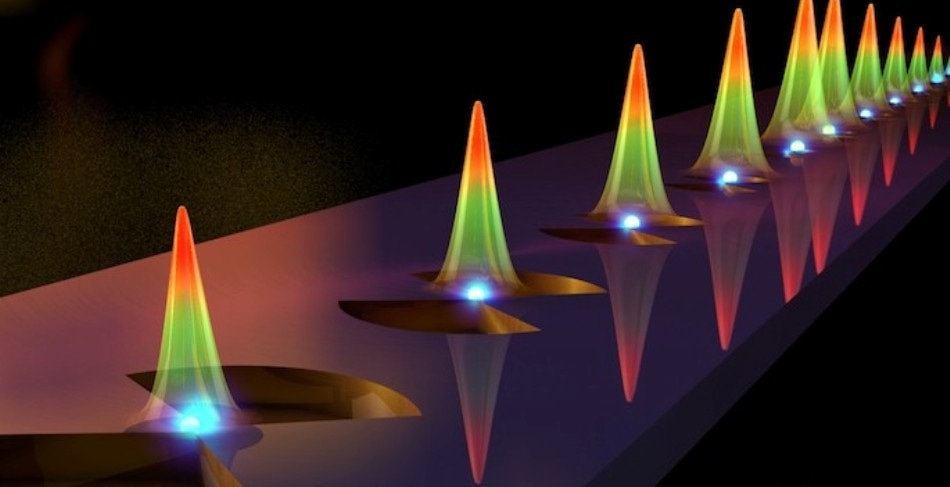Aug 27 2018
Operating computers on nearly invisible light beams instead of microelectronics would render them lighter, more rapid, and more energy efficient. Although such a technology is already present in fiber-optic cables, they are considerably large to be practically used within a computer.
 The team developed structure that’s part bowtie, part funnel that conducts light powerfully and indefinitely, as measured by a scanning near-field optical microscope. (Image credit: Ella Maru Studio)
The team developed structure that’s part bowtie, part funnel that conducts light powerfully and indefinitely, as measured by a scanning near-field optical microscope. (Image credit: Ella Maru Studio)
A group of researchers from the Vanderbilt University found the solution in a formula well known to college physics students - a very simple and elegant solution that it was tough for reviewers to believe. Professor Sharon Weiss, her doctoral student Shuren Hu, and collaborators from the IBM T. J. Watson Research Center and University of Technology in Troyes, France, have reported the proof in Science Advances, a peer-reviewed, open-access journal from AAAS, on August 24, 2018.
They created a structure that is partially bowtie and partially funnel that concentrates light powerfully and nearly indefinitely, as evaluated by a scanning near-field optical microscope. The points of the bowtie are connected by just 12 nm. The diameter of a strand of human hair is 100,000 nm.
Light travels faster than electricity and doesn’t have the same heating issues as the copper wires currently carrying the information in computers. What is really special about our new research is that the use of the bowtie shape concentrates the light so that a small amount of input light becomes highly amplified in a small region. We can potentially use that for low-power manipulation of information on computer chips.
Professor Sharon Weiss, Cornelius Vanderbilt Endowed Chair and Professor of Electrical Engineering, Physics and Materials Science and Engineering
Two years back, the researchers published their study as a theory in ACS Photonics, then partnered with Will Green’s silicon photonics group at IBM to develop a device that could prove it.
The study began with Maxwell’s equations, describing the way light propagates in space and time. Weiss and Hu used two principles from these equations and applied boundary conditions accounting for the materials used, thereby combining a nanoscale air slot surrounded by silicon with a nanoscale silicon bar surrounded by air to form the bowtie shape.
To increase optical energy density, there are generally two ways: focus light down to a small tiny space and trap light in that space as long as possible. The challenge is not only to squeeze a comparatively elephant-size photon into refrigerator-size space, but also to keep the elephant voluntarily in the refrigerator for a long time. It has been a prevailing belief in photonics that you have to compromise between trapping time and trapping space: the harder you squeeze photons, the more eager they are to escape.
Shuren Hu
Weiss stated that she and Hu plan to continue their efforts to enhance their device and investigate its probable application in next-generation computer platforms.
The National Science Foundation GOALI grant ECCS1407777 funded the study.
Nanolight
Nanolight. (Credit: Vanderbilt University)